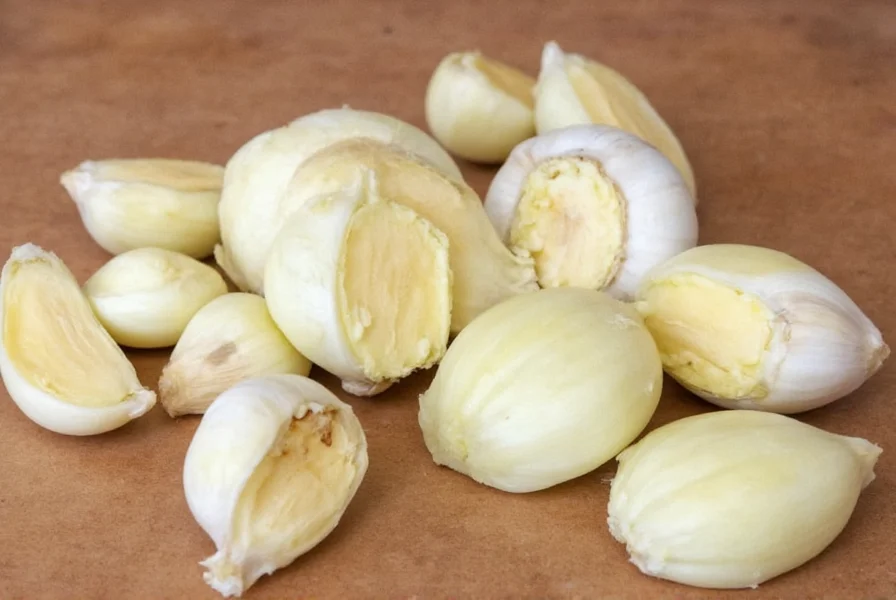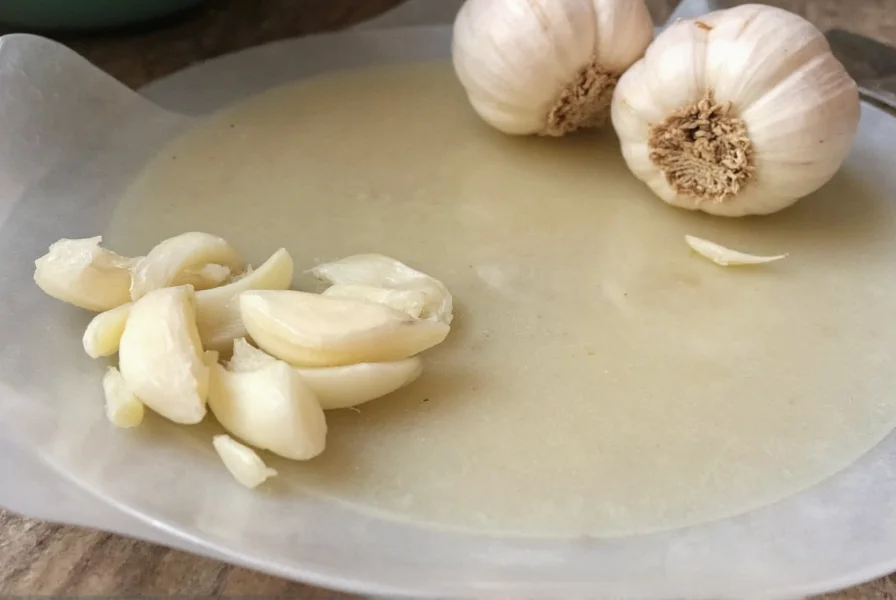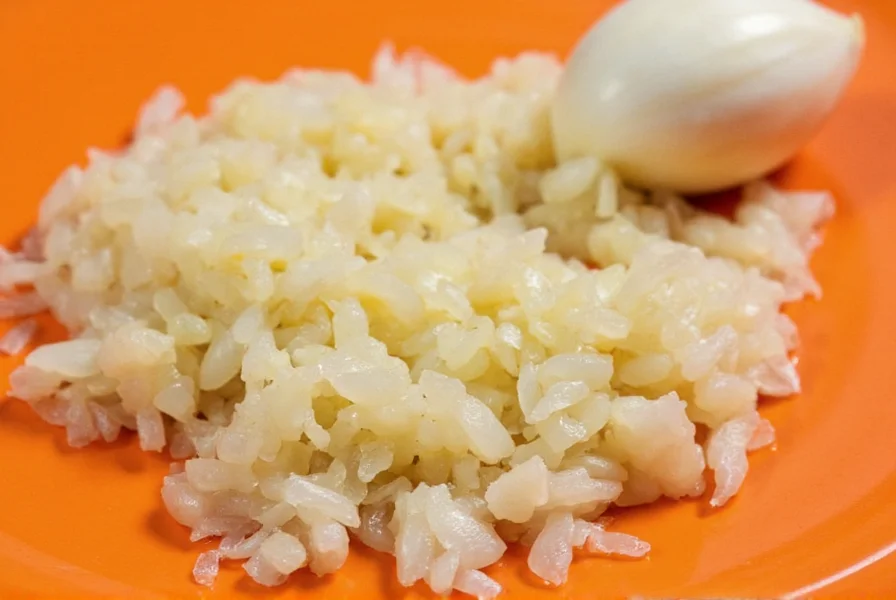Understanding garlic measurements is crucial for consistent cooking results. Many recipes specify garlic in cloves while others call for minced measurements, creating confusion for home cooks. This guide provides accurate conversions and practical tips to ensure your dishes achieve perfect garlic flavor balance every time.
Why Garlic Measurement Accuracy Matters
Garlic's flavor compounds activate when cells are broken during mincing, significantly increasing potency compared to whole cloves. Using improper measurements can lead to underwhelming or overpowering results. Professional chefs emphasize precise garlic measurements because:
- Raw garlic contains allicin precursors that transform during preparation
- Over-mincing releases bitter compounds
- Different cooking methods affect garlic's flavor development
- Garlic intensity varies by variety and freshness
Standard Garlic Conversion Guidelines
The widely accepted conversion standard in culinary circles follows this ratio:
| Whole Garlic Cloves | Minced Garlic Equivalent | Garlic Paste Equivalent |
|---|---|---|
| 1 medium clove | 1 teaspoon (5 ml) | ½ teaspoon (2.5 ml) |
| 2 medium cloves | 2 teaspoons (10 ml) | 1 teaspoon (5 ml) |
| 3 medium cloves | 1 tablespoon (15 ml) | 1½ teaspoons (7.5 ml) |
| 6 medium cloves | 2 tablespoons (30 ml) | 1 tablespoon (15 ml) |
Factors Affecting Garlic Measurements
Several variables influence the precise conversion from whole cloves to minced garlic:
Clove Size Variations
Garlic cloves range dramatically in size. Standard conversions assume medium cloves (about 1 inch long and ½ inch in diameter). For accurate measurement:
- Small cloves (under ¾ inch): Yield approximately ¾ teaspoon minced
- Medium cloves (standard size): Yield 1 teaspoon minced
- Large cloves (over 1¼ inches): Yield 1¼-1½ teaspoons minced
Mincing Technique Impact
Your mincing method affects final volume:
- Hand-minced garlic with a knife typically yields slightly more volume than food processor minced
- Finely minced garlic (smaller pieces) packs more densely, potentially reducing volume by 10-15%
- "Crushed" garlic (smashed then minced) releases more moisture, increasing volume slightly

Practical Kitchen Applications
Understanding the 2 cloves of garlic to minced conversion helps in multiple cooking scenarios:
Recipe Substitution Guide
When recipes don't match your available ingredients:
- Fresh to jarred minced: Use 1:1 ratio but reduce salt (jarred contains preservatives)
- Minced to garlic powder: 1 teaspoon minced = ⅛ teaspoon powder (use sparingly)
- Minced to garlic salt: 1 teaspoon minced = ¼ teaspoon garlic salt (reduce additional salt)
Timing Matters
Add minced garlic at the appropriate cooking stage:
- For subtle flavor: Add minced garlic during last 2-3 minutes of cooking
- For balanced flavor: Add to hot oil for 30-60 seconds before other ingredients
- For mellow flavor: Roast whole cloves before mincing
Storage and Freshness Considerations
Freshly minced garlic loses potency quickly. For best results:
- Use immediately for strongest flavor impact
- Store unused minced garlic in olive oil for up to 3 days in refrigerator
- Avoid plastic containers which can retain garlic odor
- Freeze excess minced garlic in ice cube trays for longer storage
Pre-minced garlic from jars contains citric acid to preserve color, altering both flavor profile and measurement accuracy. When substituting jarred for fresh, use 25% less to achieve similar flavor intensity.

Professional Chef Tips
Seasoned chefs recommend these techniques for perfect garlic measurements:
- "When in doubt, start with less garlic—you can always add more, but you can't remove it once added."
- "For sauces and soups, mince garlic finer to distribute flavor more evenly throughout the dish."
- "When converting recipes, consider the dish's cooking time—longer cooking requires slightly more garlic as flavor diminishes."
Frequently Asked Questions
How much minced garlic equals 2 large cloves?
Two large garlic cloves (over 1¼ inches long) yield approximately 2½-3 teaspoons of minced garlic. Large cloves contain more moisture and volume, so the standard 1:1 ratio increases to about 1¼ teaspoons per large clove.
Can I substitute garlic powder for 2 cloves of minced garlic?
Yes, but use sparingly—2 cloves of minced garlic equals approximately ¼ teaspoon garlic powder. Garlic powder is more concentrated, so start with less and adjust to taste. Remember that powder lacks the fresh, pungent quality of raw garlic.
Why does my recipe call for minced garlic instead of whole cloves?
Recipes specify minced garlic when even flavor distribution is crucial. Minced garlic releases flavor compounds more quickly and thoroughly than whole cloves, which is essential for sauces, dressings, and dishes with shorter cooking times where whole cloves wouldn't infuse properly.
How can I prevent minced garlic from burning?
Add minced garlic to already heated oil (not cold oil in a cold pan), and cook for only 30-60 seconds before adding other ingredients. Garlic burns at 325°F (163°C), so keep heat at medium-low. For longer cooking, add garlic later in the process or use whole cloves initially.
Does the 2 cloves of garlic to minced conversion differ for roasted garlic?
Yes, roasted garlic yields less volume when minced—approximately 1½ teaspoons for 2 medium cloves. Roasting reduces moisture content and causes cloves to shrink. The flavor also becomes milder and sweeter, so you may need slightly more roasted garlic to achieve similar flavor intensity as raw.











 浙公网安备
33010002000092号
浙公网安备
33010002000092号 浙B2-20120091-4
浙B2-20120091-4